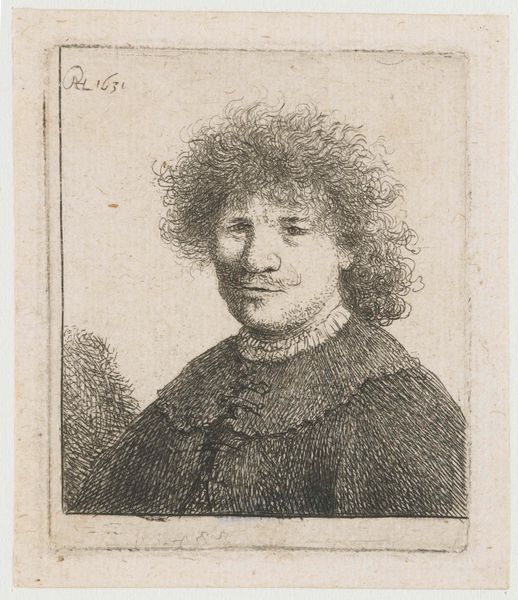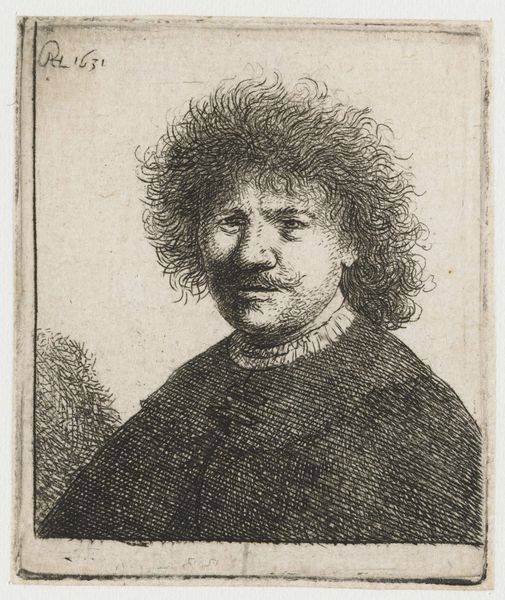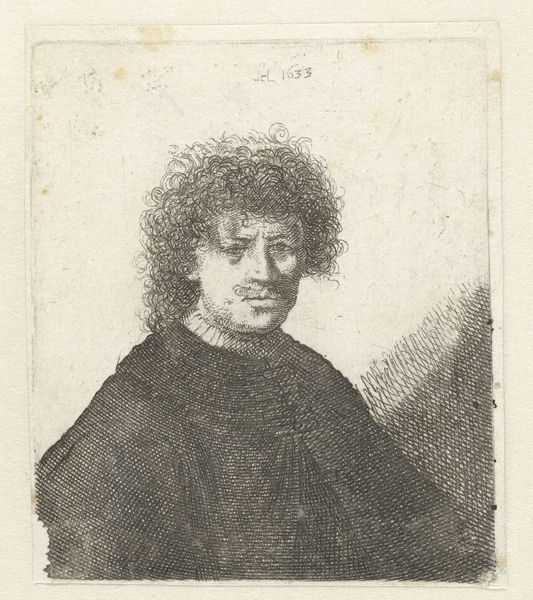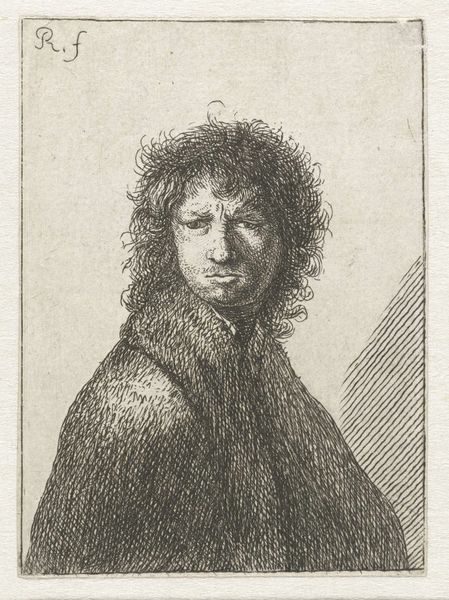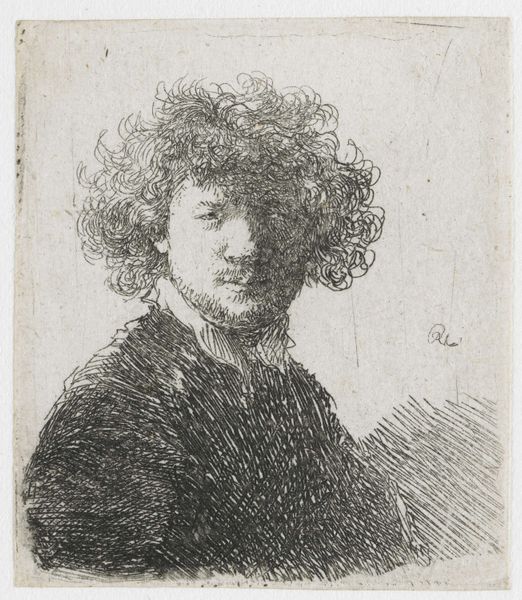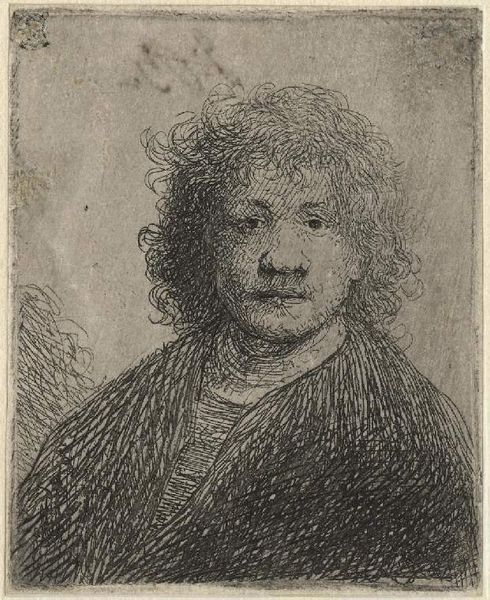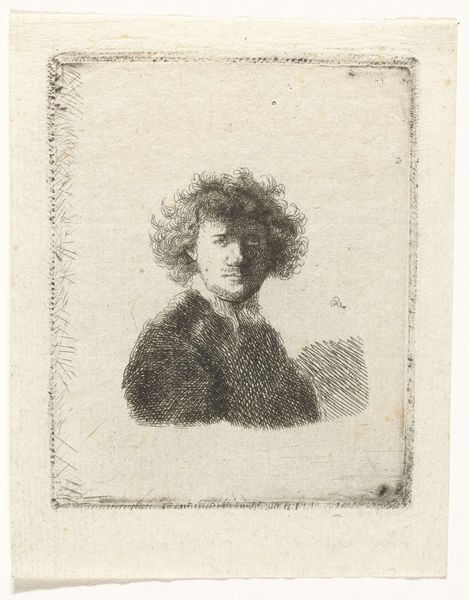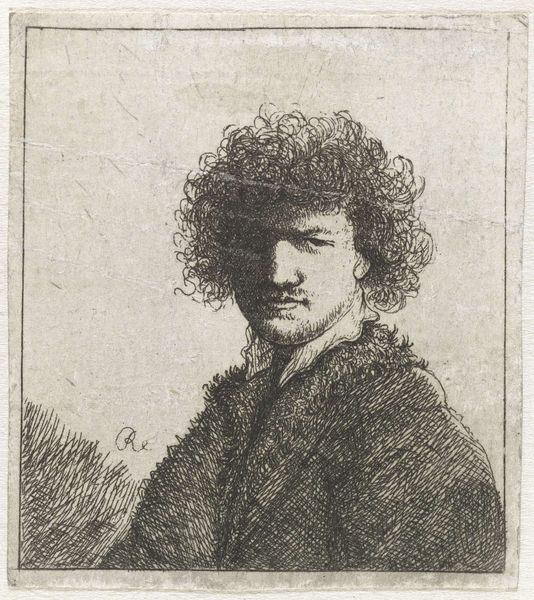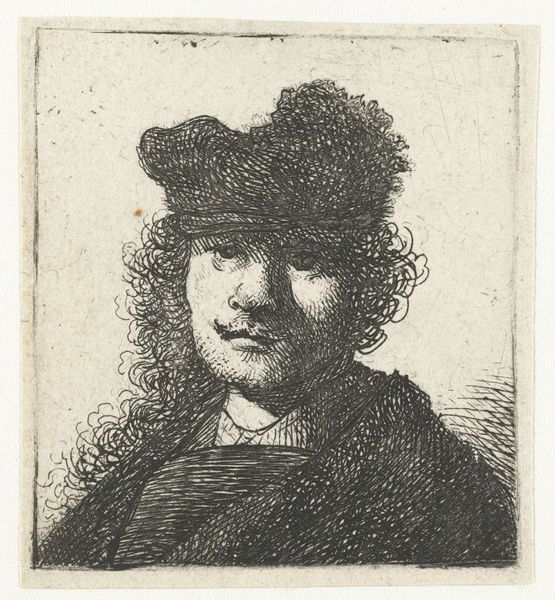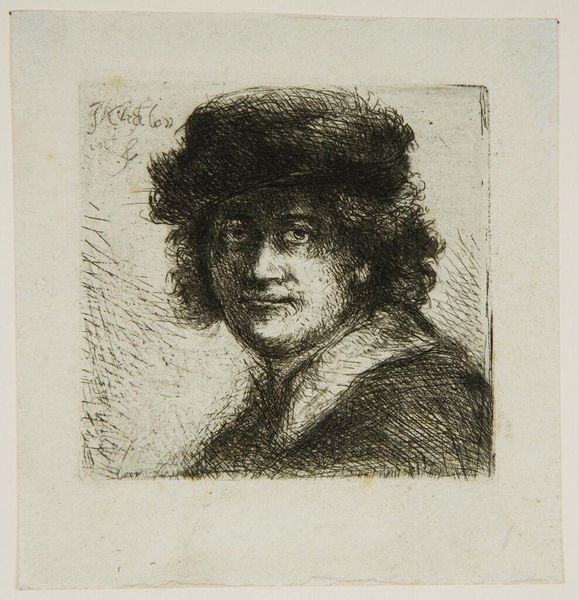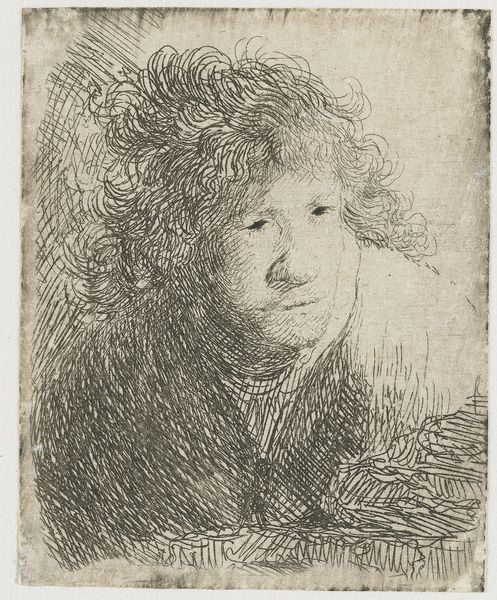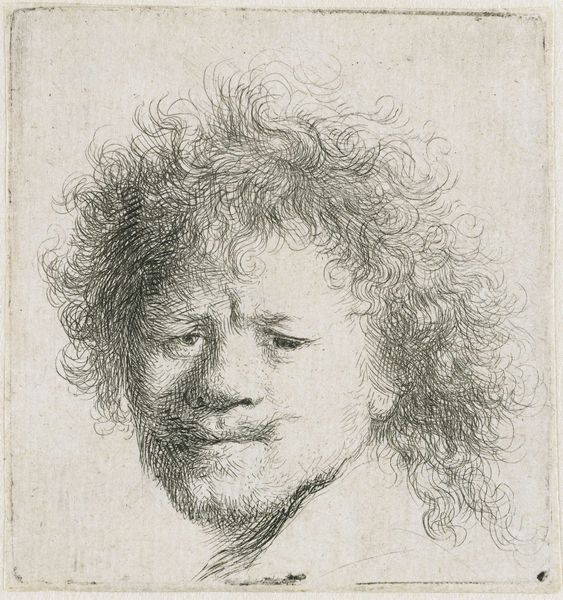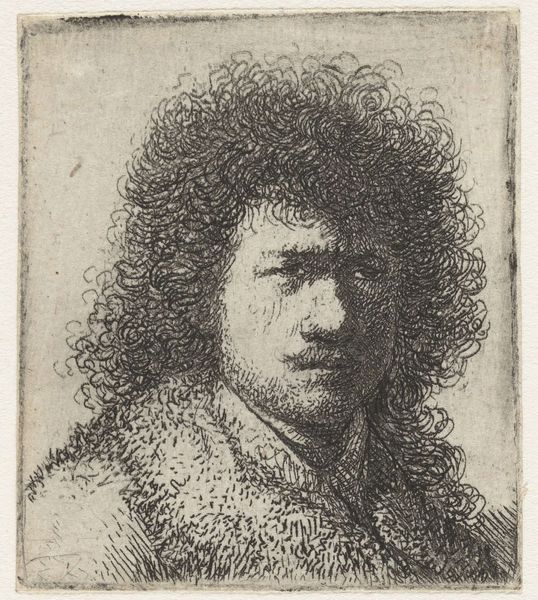
print, etching
#
portrait
#
self-portrait
#
baroque
#
dutch-golden-age
# print
#
etching
#
history-painting
Dimensions: height 61 mm, width 53 mm
Copyright: Rijks Museum: Open Domain
Curator: At first glance, he looks pensive, maybe even a little melancholy. The lines are so intricate; you can almost feel the texture of his cloak and the wildness of his hair. Editor: Indeed. What you're observing is Rembrandt van Rijn's "Self-portrait in a cloak with a falling collar: bust," dating from approximately 1631. The Rijksmuseum proudly holds this etching, showcasing the artist in the Dutch Golden Age. Curator: Ah, Rembrandt. I should have guessed. There's a certain raw honesty in his self-portraits, isn’t there? You can tell he’s not trying to present some idealized version of himself. It feels very... present. Editor: Precisely. As a self-portrait, it certainly deviates from the heroic history paintings also attributed to Rembrandt. Observe how he skillfully utilizes the etching technique. The density of the lines defines the tonal gradations, building form and suggesting volume on a relatively small scale. Notice the falling collar – it directs the gaze upward, framing his face and intensifying the focus on his expression. Curator: It’s interesting how he plays with light and shadow, even in this small print. It gives him so much depth. And that hair! It's almost like it has a life of its own, mirroring, perhaps, his own artistic energy and untamed spirit? Editor: The baroque influence is evident in the dramatic use of chiaroscuro – that contrast you noted. Functionally, the artist establishes depth by strategically using dense and loose clusters of lines, an achievement within this print medium. Curator: There’s a vulnerability in his eyes too, don't you think? Despite the formal attire, there's a very human quality that's inescapable. Like he’s searching for something. Or perhaps daring us to really see him. Editor: A compelling interpretation! The etching technique, with its capacity for fine detail and tonal subtlety, enabled Rembrandt to express not only his physical likeness but also his inner world, capturing a sense of psychological depth that continues to resonate with viewers today. Curator: Makes you wonder about his life back then, huh? Editor: The piece certainly invites speculation. An iconic work for scholars interested in Rembrandt.
Comments
No comments
Be the first to comment and join the conversation on the ultimate creative platform.
